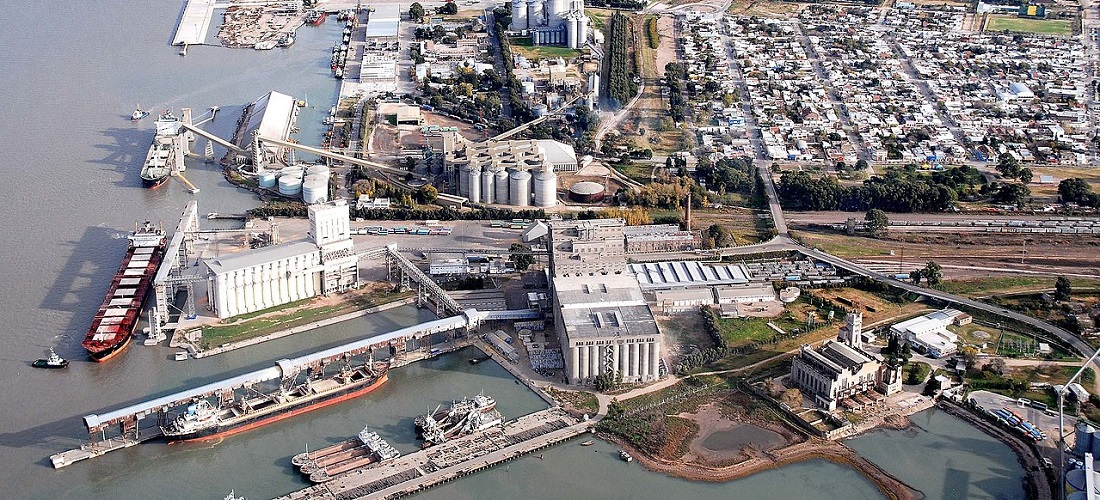
Bahía Blanca Positioned to Become a Logistics Hub for Argentina’s International Trade
Dec, 04, 2024 Posted by Gabriel MalheirosWeek 202446
The Bahía Blanca region could become a key logistics hub for Argentina, thanks to the proposed Intermodal Transport Economy Act recently introduced in the Argentine Senate by legislator Eduardo Vischi.
The initiative eliminates customs barriers for domestic cabotage, paving the way for thousands of containers and significant cargo volumes to move seamlessly via an integrated network of trucks, trains, and ships.
Jorge de Mendonça, president of the South American Intermodal Association (AIMAS), noted that the port of Bahía Blanca has the potential to handle at least 40,000 TEUs (20-foot containers) annually in cabotage operations.
This estimate, based on 2019 studies, could increase substantially with the development of the proposed North-South rail corridor, which would connect regions like Córdoba, Tucumán, and Jujuy to Bahía Blanca.
De Mendonça also emphasized that the intermodal model could optimize the transport of agricultural goods, minerals, and other key products, boosting the country’s economic efficiency.
Speaking to La Nueva, he explained that integrating rail and maritime transport, combined with infrastructure investments and improved connections, could establish Bahía Blanca as a central logistics hub for Argentina and South America.
Breaking Down Barriers to Domestic Shipping
The Intermodal Transport Economy Act aims to address longstanding barriers that have hampered the development of maritime cabotage in Argentina.
Currently, shipping domestic goods by sea involves customs procedures similar to those required for international trade, making it less practical compared to quicker alternatives like trucks, trains, or planes.
The proposed legislation would leverage modern traceability technologies to meet customs requirements without adding costs or delays.
This change would enable transportation companies across different modes—truck, rail, ship, and air—to operate in a more coordinated and efficient manner.
In this context, Bahía Blanca, with its strategic location and strong logistics potential, is poised to be one of the primary beneficiaries.
A Corridor Connecting the Nation
Since 2011, AIMAS has been advocating for the transformation of Bahía Blanca into the central hub of a North-South rail corridor.
This corridor would link Bariloche with Córdoba, Tucumán, and Jujuy, providing a more efficient and cost-effective solution for transporting part of the 15–60 million tonnes of cargo moved annually along this route.
The port of Bahía Blanca is uniquely positioned to serve as a key logistics interface—not just for domestic trade but also as a vital gateway for exports to global markets.
De Mendonça stressed that Bahía Blanca’s potential extends beyond containerized cargo.
“We no longer send grain from Bahía Blanca to Rosario because the northern rail connections are inadequate,” he shared, recalling a conversation with a rail industry colleague. He pointed out that as far back as 2012, 12 million tonnes of grain were transported from southern Buenos Aires to Rosario, while another 12 million tonnes were shipped from Rosario to Quequén and Bahía Blanca in bulk carriers.
He believes rebuilding the North-South rail corridor, including the Rosario-Puerto Belgrano route, would enhance Bahía Blanca’s role, delivering significant benefits to agriculture and logistics.
Modernizing this strategy with updated infrastructure could reduce carbon emissions and create jobs in local communities by integrating rail and truck transport.
Toward a Fully Integrated System
“Rebuilding the North-South rail corridor is urgent,” de Mendonça stated. “This includes the Rosario-Puerto Belgrano section from Pringles to Coronel Granada with tracks capable of supporting 25 or 32.5 tonnes per axle. Strong intermodal integration between trucks and trains, with support for every small and medium-sized business and intermediate locality, will ensure a robust supply chain. Mixed-use trains for passengers and e-commerce would also deliver better costs and opportunities for bulk goods, even from remote areas.”
He highlighted the potential for a modernized corridor to bolster agricultural exports, support small agribusinesses, and improve logistics efficiency nationwide.
Source: Argenports
Original reporting avaiable at: https://argenports.com/nota/bahia-blanca-como-eje-del-transporte-intermodal-un-futuro-con-40000-contenedores
-
Other Logistics
Feb, 29, 2024
0
Progress Made on Access Highway to Lake Itaipu in Paraguay
-
Jan, 24, 2025
0
MAPA Launches AgroInsight to Strengthen Brazilian Agribusiness Exports
-
Shipping
Dec, 16, 2021
0
CrewEQUIP launched to combat omicron crew crunch
-
Ports and Terminals
Sep, 16, 2019
0
Antaq authorizes new purpose for Rio Grande shipyard

